Lung Aerosol Dynamics
In collaboration with off-campus scientists and research MDs, we pioneered realistic computer simulations of airflow and toxic/therapeutic particle deposition in human nasal and lung airway models. As an outcome of the scientific analyses, a smart inhaler system has been developed. Major results include:
- Development a physiologically realistic whole-lung airway model (WLAM) which can accurately predict the total, segmental and regional lung particle depositions.
- Development of 3-D quasi-steady and transient inhalation correlations matching deposition results obtained with lab models as well as subject-specific airways
- Depiction of unique deposition patterns of vapor/nanomaterial vs. micron particles
- Identification of “hot-spots” of excessive toxic particle deposition, valuable to toxicologists and regulators
- A new methodology for targeted drug-aerosol delivery, independent of a patient’s lung morphology
- A first-time simulation of air-particle inhalation for a realistic nasal-oral-tracheobronchial airway model
- Design and development of a smart inhaler system (US patent # 7900625 on 08 March 2011)
Airway morphology and models
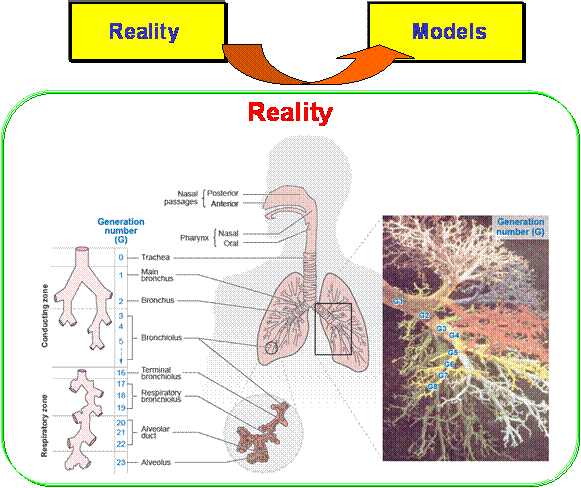
Airway morphology and models
The sheer complexity of the human lung, featuring millions airways, prohibits a full-scale study. So, as an alternative, we developed physiologically realistic and computationally efficient computer simulation Whole Lung-Airway Models (WLAMs).


The WLAM predicted results are validated with the experimental results.

Examples of different human upper-airway models

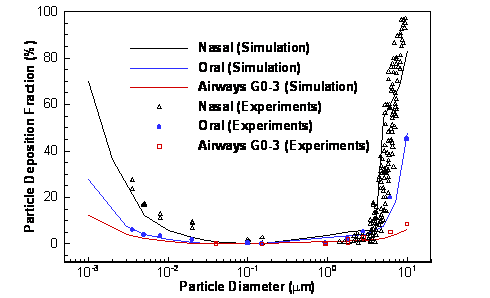
Particle deposition fractions in human nasal, oral and upper tracheobronchial airways
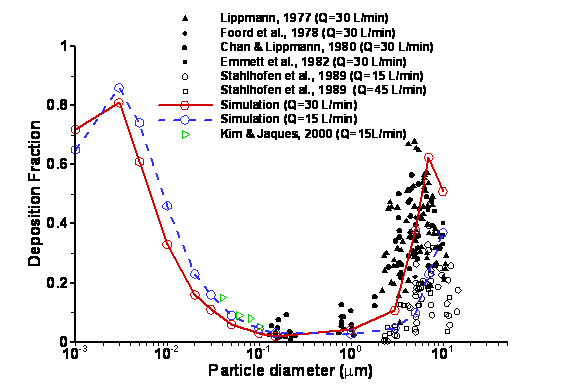
Particle deposition fractions in the entire human tracheobronchial region
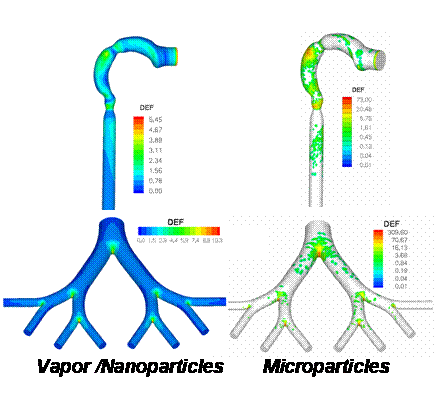
Drug-Aerosol Targeting Examples
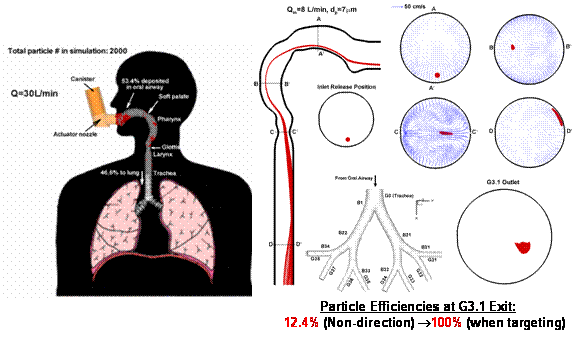
Non-directional drug aerosol deposition in the human respiratory system with traditional inhalation devices (e.g., pMDI) (left panel); controlled air-particle stream and distributions in human upper airway models (right panel).
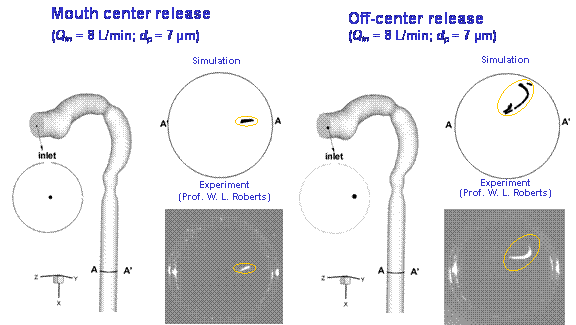
Comparisons between simulated particle distributions and experimental visualizations in the human oral airway models with two different particle release positions at the mouth inlet

